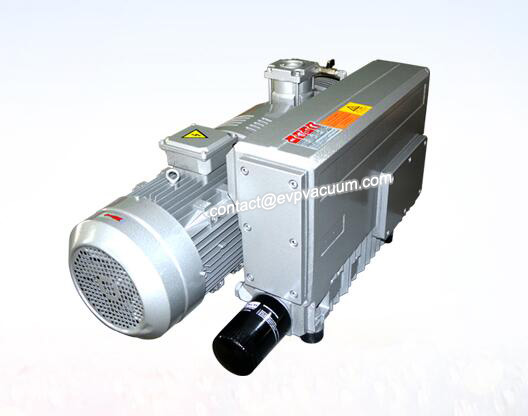Vacuum pump technology in petroleum refining industry
Petroleum is a valuable energy resource with high utilization value. It is the main component of global energy supply in this century, accounting for about 35%~50% of the total. Petroleum products, as energy and chemical raw materials, involve in various fields of national economy and national defense construction, and go deep into all links of people’s clothing, food, housing and transportation, and become important strategic materials related to the national economy and people’s livelihood. Therefore, oil refining industry has become one of the basic industries of national economy. The vacuum pump manufacturer intends to elaborate on the vacuum pump technology in the petroleum refining industry.
The process of using vacuum pump technology in refining process
The crude oil processing schemes include fuel type, fuel – chemical type, fuel – lubricating oil type and fuel – lubricating oil – chemical type.
Vacuum pump technology in petroleum refining industry mainly reflects the following aspects:
1. Vacuum distillation
Crude oil distillation is the first process of crude oil processing, which generally includes atmospheric distillation and vacuum distillation. The crude oil can only get about 20%~30% light oil (gasoline, kerosene, diesel, etc.), and the rest is heavy oil. In order to steam more distillate as secondary processing raw materials without thermal cracking reaction of macromolecular hydrocarbons in heavy oil, vacuum distillation is used. Since the boiling point of the substance decreases with the reduction of external pressure, the high boiling fraction (that is, the macromolecular hydrocarbons) will be vaporized at a lower temperature when the heavy oil is heated at a lower pressure, thus effectively separating the high boiling fraction (boiling point less than 500) and the residual oil from cracking.
According to operating conditions, vacuum distillation “wet” and “dry” two. So-called dry vacuum distillation, that is, do not rely on the injection of water vapor to reduce the oil and gas partial pressure of vacuum distillation, dry vacuum distillation low energy consumption high application, and wet vacuum distillation process is gradually replaced by the former.
For a vacuum system, wet distillation USES a two-stage steam jet pump with a residual pressure of 3-5kpa on the top of the tower, while dry vacuum distillation USES a three-stage steam jet pump with a residual pressure of 1-2kpa on the top of the tower. To improve the extraction rate of crude oil is mainly to increase the extraction rate of the decompression tower or increase the cutting depth of crude oil. Under the same gasification temperature, the higher the vacuum degree is, the higher the extraction rate of the tower will be
2. Catalytic reforming and aromatics extraction
Catalytic reforming is an important secondary processing in petroleum processing, chemical raw materials used in the production of high octane number gasoline or a aromatic hydrocarbons (benzene, toluene and xylene, etc.) when using sulfolane extraction in vacuum distillation method from the separation of aromatic solvents, recovery tower gas 冾 into aromatic tank after coagulation (roof with steam jet vacuum pump).
3. Lubricating oil solvent refining
The amount of lubricating oil is not large, accounting for a small proportion of petroleum products, but there are many varieties of lubricating oil, hundreds of, and often have special requirements, the general process of lubricating oil production such as raw materials → refining →~ deasphalting → dewaxing supplement refining → post-processing → blending.
The purpose of solvent refining is to remove harmful impurities, improve the performance of lubricating oil, to meet the use requirements. The basic principle of solvent refining is to use the selective solubility of some solvents to achieve the purpose of removing the desired well components in lubricating oil. No matter what kind of solvent is used, the basic production process consists of solvent extraction and solvent recovery. In the solvent recovery process, the recovery of the refined liquid and the removal of the residual solvent in the extraction liquid are completed by vacuum distillation in the stripper under vacuum state.
Vacuum pump technology in petroleum refining industry is on the rise. The vacuum acquisition equipment used by refiners is a large number of steam jet pumps and only a small number of mechanical vacuum pumps are used for some dry vacuum distillation towers and pressure reduction towers in small refineries. With the increasingly large pressure tower, steam jet pump has become a monster, energy consumption, low efficiency, water pollution and other increasingly prominent contradictions.
The extraction capacity of vacuum pump has also been greatly improved in recent years, which is enough to meet the vacuum requirements of some small and medium pressure relief devices, solvent recovery devices and oil refining devices.
(The article comes from the Internet. If reprinting is not allowed, please contact our company to delete it.)

